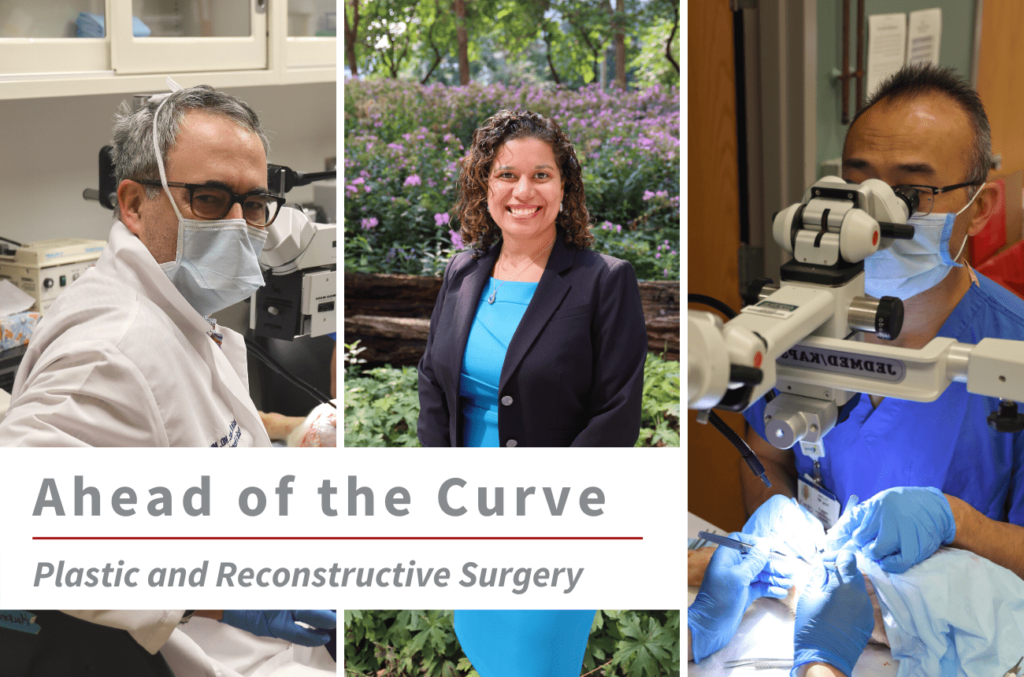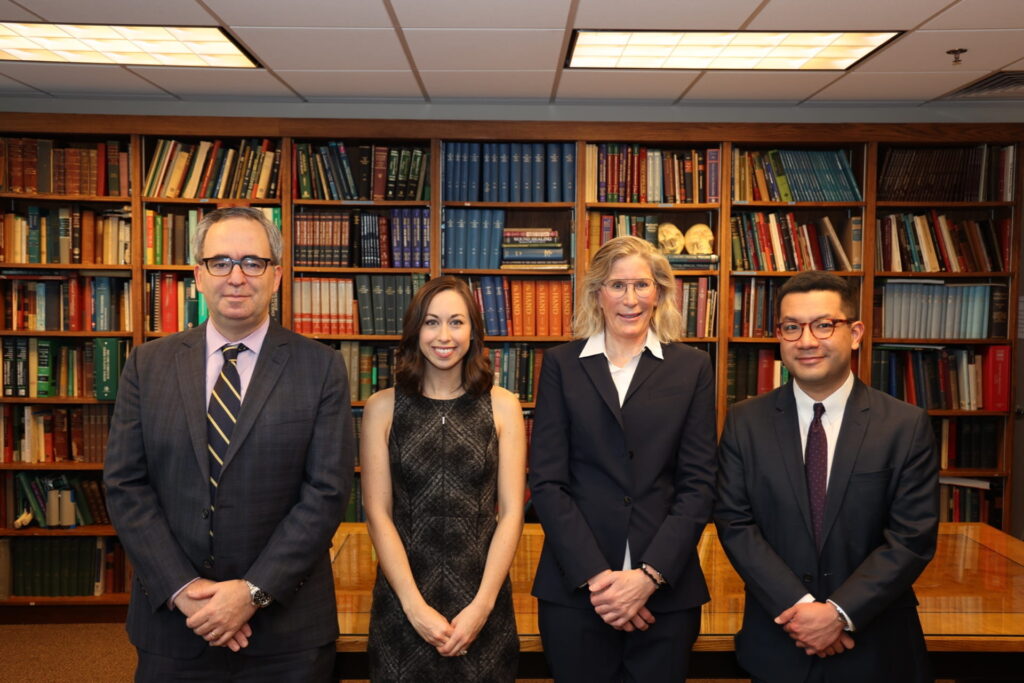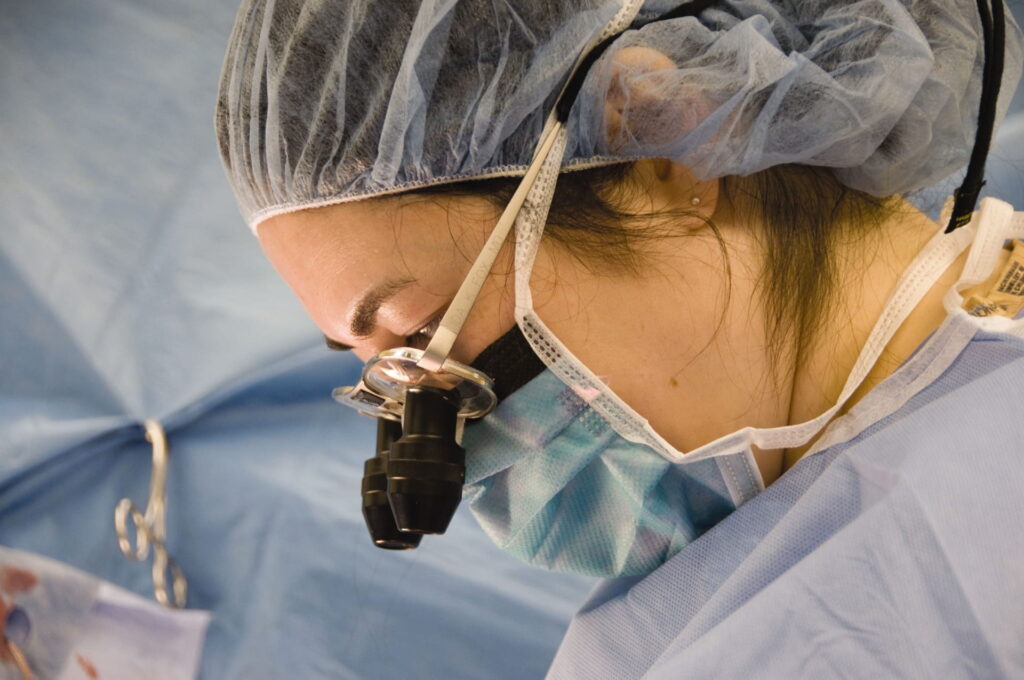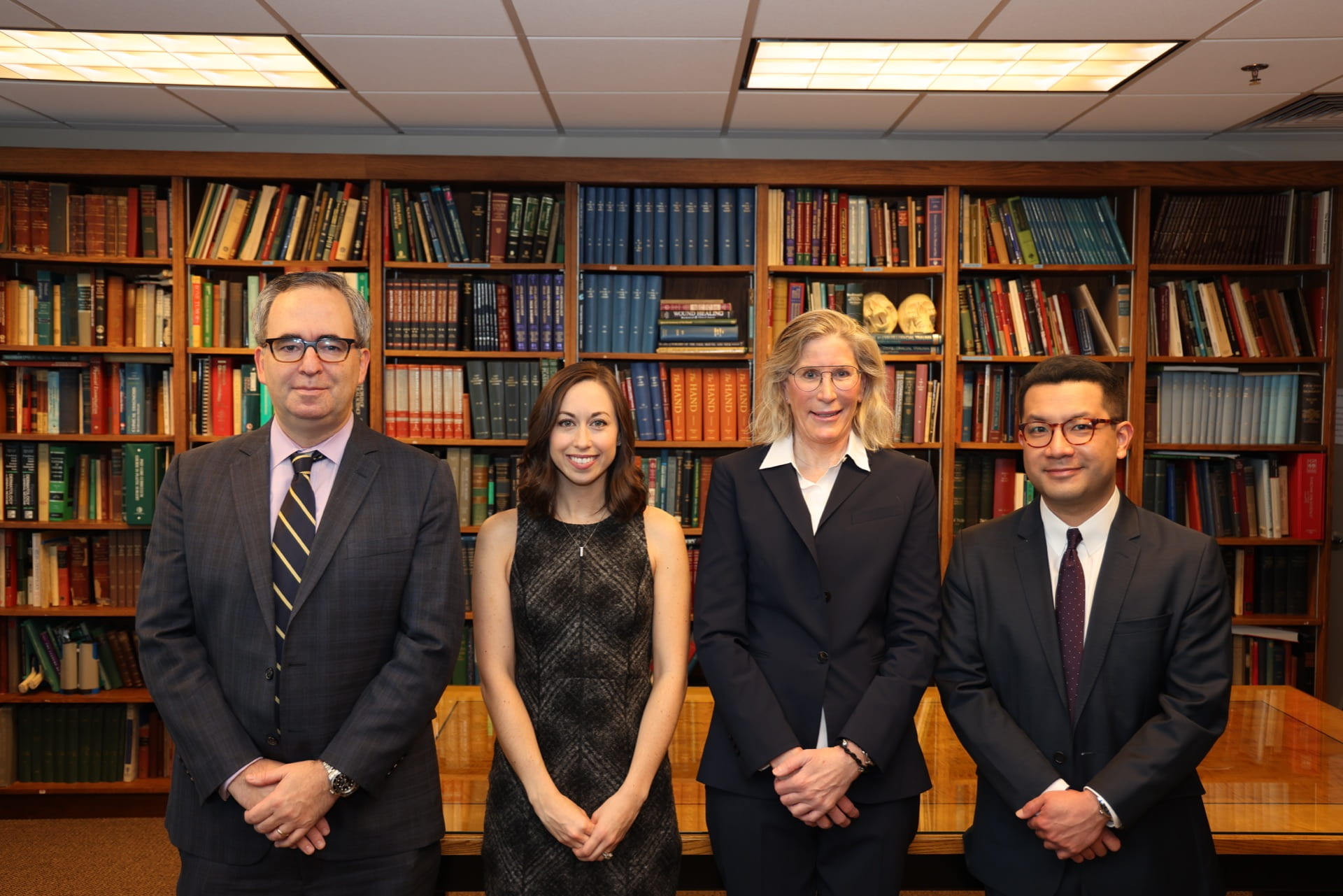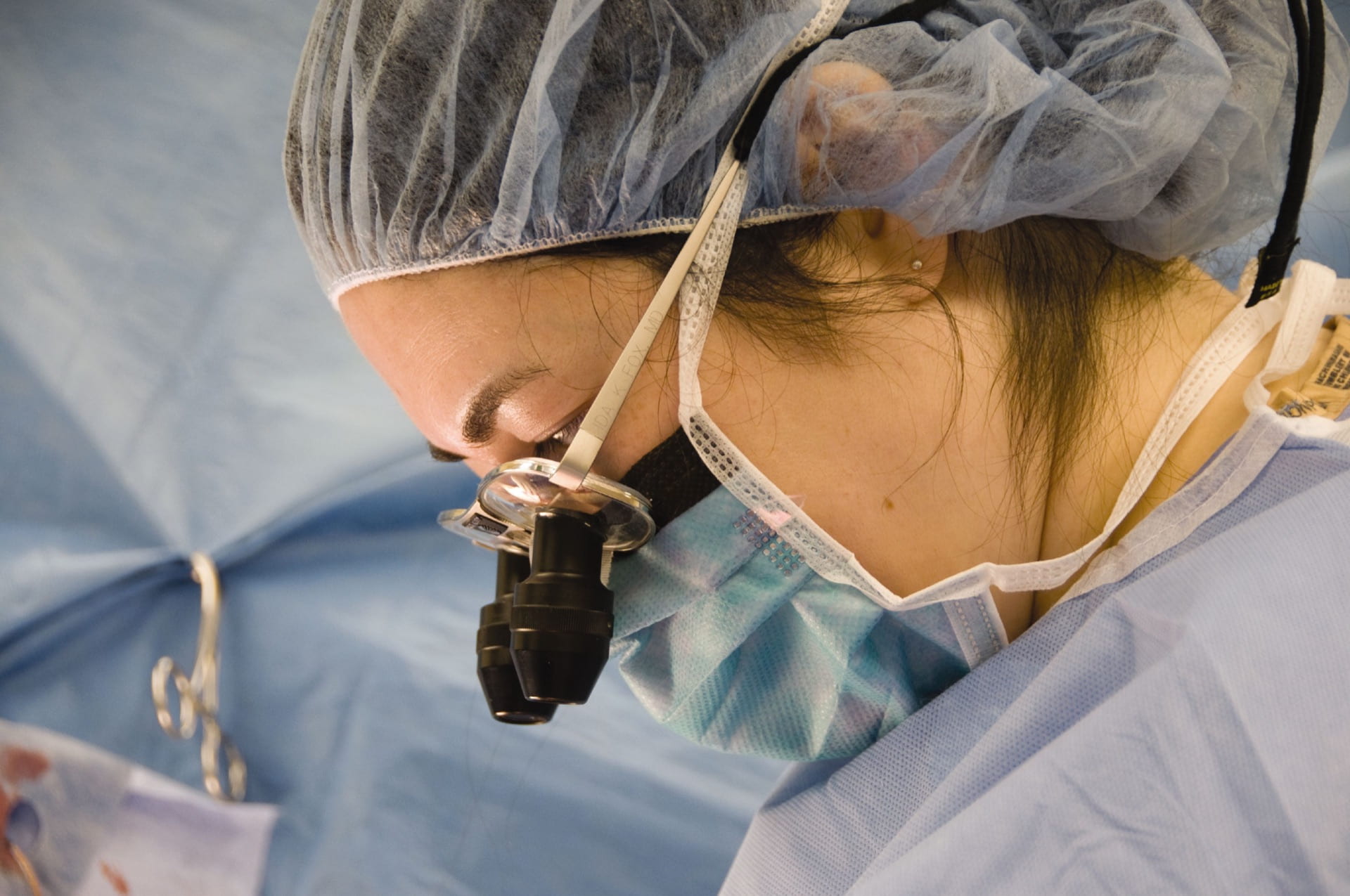Plastic and reconstructive surgeons are experts in craniofacial, aesthetic, breast and general reconstructive, gender affirming, hand, limb preservation, lymphedema, nerve and pediatric plastic surgeries. The division is an international center for nerve injury and pioneer of peripheral nerve transfers and other innovative techniques. Faculty are leaders in basic, translational and clinical research, including clinical outcomes research and bench-to-bedside discoveries in nerve research and tissue engineering. A residency and fellowship offer comprehensive training, outstanding mentorship and exposure to advanced surgical technology.
Division of Plastic and Reconstructive Surgery | 2020 Annual Report
Justin Sacks, MD, MBA, joins the department as Shoenberg Professor and Division Chief of Plastic and Reconstructive Surgery. Sacks comes to Washington University from Johns Hopkins School of Medicine, where he was Vice-Chair of Clinical Operations and Director of Oncological Reconstruction.
With the introduction of new faculty and expansion of clinical programs, Sacks aims to build on the legacy of the Division of Plastic and Reconstructive Surgery. His predecessor, Susan Mackinnon, MD, revolutionized the field of peripheral nerve transfer. Previous chiefs of the division are among the founding figures of plastic and reconstructive surgery. Sacks describes a plastic surgeon’s role as providing the best possible head-to- toe care to all patients in a multidisciplinary setting. To fulfill this role, the division is growing and offering new opportunities for patient care.
The division has established a multidisciplinary lymphedema surgery program, amassing expertise from radiology, physical/occupational therapy, lymphatic medicine, imaging, surgical oncology and plastic and reconstructive surgery. Sacks and Rachel Anolik, MD, who completed a plastic surgery residency at Duke and microvascular and reconstructive fellowship at Memorial Sloan Kettering, provide comprehensive care for lymphedema patients, from diagnosis to advanced imaging and surgical treatment.
Kelly Currie, MD, brings expertise in hand, upper extremity and limb preservation surgery to community practice at Christian Hospital. Currie leads the charge in ensuring that access to quality reconstructive surgery is available to North St. Louis. She works alongside Sacks and John Felder, MD, in collaboration with Acute and Critical Care Surgery (ACCS) and Vascular Surgery to preserve the limbs of peripheral vascular disease patients, who might otherwise require amputation. Grant Bochiccio, MD, MPH, Chief of ACCS, and John Kirby, MD, provide expertise in wound care, while Patrick Geraghty, MD, J. Westley Ohman, MD, and
Luis Sanchez, MD, Chief of Vascular Surgery, restore circulation to targeted anatomy. This limb preservation program takes a truly coordinated approach rarely seen in treating patients with debilitating conditions such as diabetic foot ulcers.
Amy Kells, MD, PhD, who has extensive training in hand and microsurgery, is expanding access to extremity surgery in community practice at Barnes-Jewish St. Peters Hospital and Alton Memorial Hospital. Kells brings expertise in clinical care and research on MRI neurography, a developing imaging modality for use in a wide variety of clinical settings of nerve injury and pathology.
Dennis Nguyen, MD, MS, who completed a plastic and reconstructive surgery residency at Washington University, brings his expertise in general adult craniofacial reconstruction. An additional program he is helping develop is facial contouring procedures.
The ongoing efforts of the division, as well as the introduction of new faculty and clinical programs, reinforces the vision Sacks has for the future of plastic and reconstructive surgery as a truly head-to-toe surgical specialty.
2020 Highlights
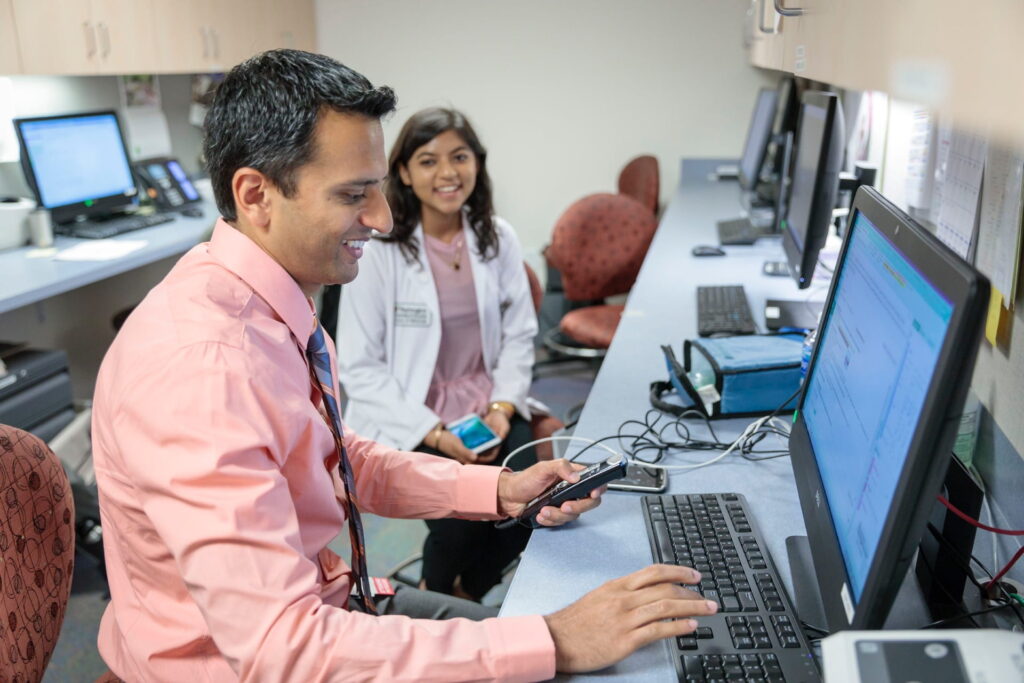
CLINICAL
Kamlesh Patel, MD, MSc, director of craniofacial surgery at St. Louis Children’s Hospital, has advanced to a new leadership role in the division. Patel, who completed the Washington University Master of Science in Clinical Investigation Program and Academic Medical Leadership Development Program for Physicians and Scientists, is now the Director of Clinical Operations
in Plastic and Reconstructive Surgery. Leading clinical operations means that Patel will work with division leadership to help optimize clinical outcomes, education and research across: Aesthetic, Breast, Adult Craniofacial, Pediatric Plastic, General Reconstructive, Hand, Limb Preservation, Lymphedema, Nerve and Transgender Surgery.
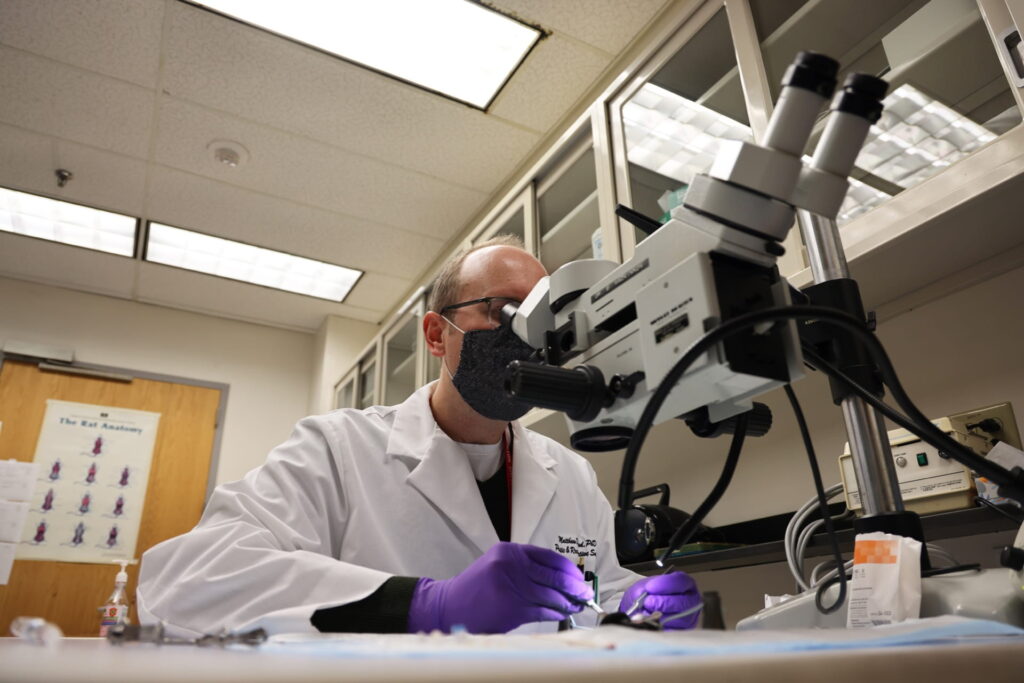
RESEARCH
The Plastic Surgery Research Laboratories (PSRL) are a consortium of researchers with the common objective of investigating the pathology, mechanisms and treatments for problems facing plastic and reconstructive surgeons. PSRL research spans the division’s research programs: Aesthetic, Breast Reconstruction, Craniofacial, Nerve, Flap Physiology and Monitoring, Tissue Engineering, Wound Healing and Vascularized Composite Allotransplantation. Surgeons, scientists, research fellows and medical students contribute to innovative research that embodies the head-to-toe nature of plastic and reconstructive surgery from bench to bedside. Matthew Wood, PhD, is Scientific Director of the PSRL and leads National Institutes of Health-funded peripheral nerve research.
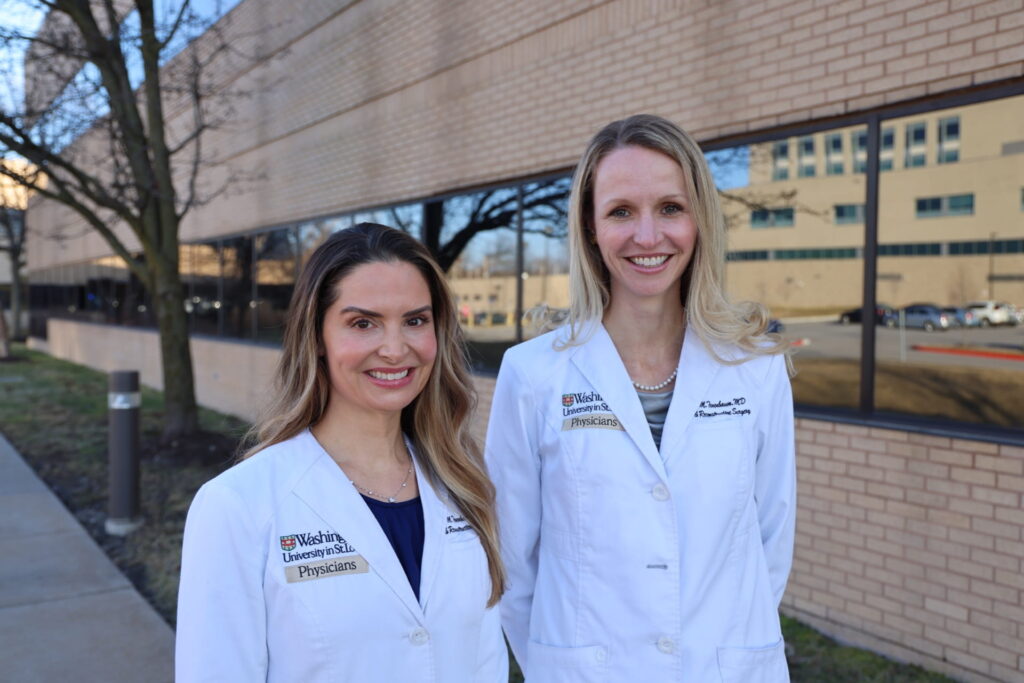
EDUCATION
Originally introduced in 1920 by Vilray Blair, MD, the first Division Chief of Plastic and Reconstructive Surgery, the Washington University Plastic Surgery Residency celebrates 100 years of excellence in surgical training. Led by Program Director Marissa Tenenbaum, MD, the program provides cutting-edge head-to-toe surgical training in breast, craniofacial, pediatrics, head/neck trauma, hand, microsurgery, aesthetic and peripheral nerve surgery. This year, Alison Snyder- Warwick, MD, was named Associate Program Director. The program continues its legacy by training a diverse group of future leaders in plastic and reconstructive surgery. In its centennial year, 12 out of 19 plastic surgery residents are female.
Surgeons in the Division of Plastic and Reconstructive Surgery are expanding their research into tissue engineering and biomedical innovation. The Plastic Surgery Research Laboratories span the breadth of clinical, basic and translational research, and faculty are developing new ventures through collaboration with the Cortex Innovation Community and Washington University Office of Technology Management.
Justin Sacks, MD, MBA, the Chief of Plastic and Reconstructive Surgery, and Mitchell Pet, MD, are working on inventing new devices that will help treat diseases and pathophysiology in patients. Ida Fox, MD, is developing decision aids to guide patients through their surgery and help them make informed decisions that fit their goals.
Sacks has an accomplished history of tissue engineering. Prior to joining Washington University, he ran a research laboratory at Johns Hopkins School of Medicine and co-founded a biotech company that develops tissue scaffolding for use in restoring soft tissue. Sacks continues research on ways to connect blood vessels without sutures, and is in the process of developing a device to reduce pressure sores through a low-profile wireless sensor.
Pet is addressing the important issue of tissue perfusion analysis as it applies to post-operative free tissue transfer monitoring. In collaboration with neurosurgeon Matthew MacEwan, MD, PhD, and Northwestern University researcher John Rogers, PhD, Pet is developing novel advanced wireless biosensors suited for reliable, patient-centered, and non-invasive monitoring of blood flow and oxygen delivery in a wide variety of tissue types.
Fox is the principal investigator on a multi- disciplinary, multi-institutional research project studying natural recovery after cervical spinal cord injury (SCI) and surgical treatments to restore upper extremity function. Fox’s research is rooted in the practice of biopsychosocial medicine: treating the whole person, not just the physical condition. She is developing decision aids to help people choose between tendon transfer and novel nerve transfer surgery types after SCI injury.
The division has a legacy of excellent peripheral nerve research. From this strong foundation, Sacks sees great opportunities for the future of plastic and reconstructive surgery.
“We are going to expand on what is already established and grow tissue engineering and biomedical innovation,” Sacks says. “Research in plastic and reconstructive surgery allows us to take an idea and transform it into something real, and use this to improve the health of our patients.”
